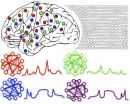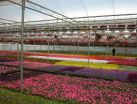(Press-News.org) High blood glucose levels after surgery may be an important risk factor for infection at the surgical site in patients having general surgery, according to a report in the September issue of Archives of Surgery, one of the JAMA/Archives journals.
Surgical site infection accounts for 14 percent to 17 percent of hospital-acquired infections, making it the third most common type of infection acquired at health-care facilities and the most common among patients having surgery, according to background information in the article. "Studies have shown that these infections prolong the hospital length of stay after surgery, increase rehospitalization rates and dramatically increase the use of emergency services and health care costs," the authors write.
Ashar Ata, M.B.B.S., M.P.H., and colleagues at Albany Medical College, Albany, N.Y., reviewed the medical records of patients who had general or vascular surgery between Nov. 1, 2006, and April 30, 2009. A total of 2,090 patients were randomly selected from a quality improvement database and then matched with medical records to obtain information about postoperative glucose values. These values were available for 1,561 patients, including 559 who had vascular surgery, 226 who had colorectal surgery and 776 who had a type of general surgery other than colorectal.
Overall, 7.42 percent of the patients developed surgical site infections, including 14.11 percent of those who had colorectal surgery, 10.32 percent who had vascular surgery and 4.36 percent of those who had other general surgery.
Among general surgery patients, factors associated with surgical site infection included age, emergency status, physical status as classified by the American Society of Anesthesiologists, time in surgery, diabetes and high postoperative blood glucose (hyperglycemia). However, after adjusting for postoperative blood glucose level, all other factors were not significant predictors of infection. A subanalysis of colorectal surgery patients found that a postoperative serum glucose level higher than 140 milligrams per deciliter was the only significant predictor of surgical site infection.
Among vascular surgery patients, operative time and diabetes were the only significant predictors of surgical site infection, which was not associated with postoperative hyperglycemia.
Hyperglycemia may impair the immune system, and insulin may have anti-inflammatory and other anti-infective activities. However, it is possible that the accumulation of other risk factors for surgical site infection cause hyperglycemia rather than vice versa; hence, further study is needed, the authors note.
"In conclusion, we found postoperative hyperglycemia to be the most important risk factor for surgical site infection in general and colorectal cancer surgery patients, and serum glucose levels higher than 110 milligrams per deciliter were associated with increasingly higher rates of post-surgical infection," they continue. "If hyperglycemia is confirmed in future prospective studies with better postoperative glucose data to be an independent risk factor for postsurgical infection in general surgery patients, this would give surgeons a modifiable variable to reduce the incidence of postoperative infection."
INFORMATION:
(Arch Surg. 2010;145[9]:858-864. Available pre-embargo to the media at www.jamamedia.org.)
Editor's Note: Please see the article for additional information, including other authors, author contributions and affiliations, financial disclosures, funding and support, etc.
About one in ten U.S. adolescents uses sunless tanning products, and an intervention promoting these products as an alternative to regular tanning may reduce sunbathing and sunburns among adult women, according to two reports in the September issue of Archives of Dermatology, one of the JAMA/Archives journals.
Ultraviolet radiation exposure was recently upgraded to the highest cancer risk category and is the most common avoidable cause of skin cancer, according to background information in the articles. Sunless tanning products offer an alternative method of achieving ...
Botulinum toxin treatment appears to offer a temporary, short-term solution to relieve drooling in children diagnosed with certain neurological disorders, according to a report in the September issue of Archives of Otolaryngology – Head & Neck Surgery, one of the JAMA/Archives journals.
"Recent estimates suggest a prevalence of [drooling in] nearly 60 percent in children in special care school, of which 33 percent could be classified as severe," the authors write as background in the article. "Depending on the associated neurological disorder, cognitive abilities and ...
Severe injury to the esophagus can occur after a child swallows a disc battery, according to a report in the September issue of Archives of Otolaryngology–Head & Neck Surgery, one of the JAMA/Archives journals.
"A disc battery is an increasingly common foreign body ingested by children," the authors write as background information in the article. The American Association of Poison Control Centers reported a total of 2,063 disc battery ingestions in 1998; the number increased 80 percent during the next eight years. When the battery is lodged in the esophagus, its alkaline ...
Patients who seek a second surgery to revise their rhinoplasty often do so because they are dissatisfied with the symmetry of their nasal tip and because they experience nasal obstructions, according to a report in the September/October issue of Archives of Facial Plastic Surgery, one of the JAMA/Archives journals. Surgeons who examine revision rhinoplasty candidates cite slightly different findings than patients, suggesting that communication about nasal aesthetics could be improved.
Approximately 5 percent to 15 percent of patients who have rhinoplasty [plastic surgery ...
Analysis of seagull droppings has revealed that one in ten carry 'superbug' bacteria, resistant to the last-resort antibiotic Vancomycin. Researchers writing in BioMed central's open access journal Proteome Science investigated 57 migratory seagull samples recovered from an island off the coast of Portugal.
Gilberto Igrejas from the University of Trás-os-Montes and Alto Douro, Portugal, worked with a team of researchers to carry out the study. He said, "We used a novel technique called proteomics to detect the maximum number of bacterial proteins which are thought to ...
Berkeley — When it comes to conducting complex tasks, it turns out that the brain needs rhythm, according to researchers at the University of California, Berkeley.
Specifically, cortical rhythms, or oscillations, can effectively rally groups of neurons in widely dispersed regions of the brain to engage in coordinated activity, much like a conductor will summon up various sections of an orchestra in a symphony.
Even the simple act of catching a ball necessitates an impressive coordination of multiple groups of neurons to perceive the object, judge its speed and trajectory, ...
SPRINGFIELD, MO—The American elderberry is showing promise as a profitable commercial fruit crop. Traditionally used for making jelly, juice, and wine, elderberry is becoming increasing important in North America's burgeoning "nutraceutical" industry. Historically, elderberries have mostly been harvested from the wild; researchers have made recently made efforts to select or develop improved cultivars. Increased interest and emerging markets are encouraging scientists to develop improved elderberry cultivars that yield consistent, superior production. Scientists from the ...
GRIFFIN, GA—Blueberry aficionados will soon have a tasty, colorful new variety for their backyard gardens. Blueberry experts D. Scott NeSmith and Mark K. Ehlenfeldt introduced 'Blue Suede™' in a recent issue of HortScience. The new southern highbush blueberry (Vaccinium hybrid) was released by the University of Georgia's College of Agricultural and Environmental Sciences, the University of Georgia Agricultural Experiment Station, and the U.S. Department of Agriculture–Agricultural Research Service. 'Blue Suede™' is targeted for sales to the home gardener market.
According ...
WEST LAFAYETTE, Ind. - A Purdue University-led research team has uncovered the chemical components of the adhesive produced by oysters, providing information that could be useful for fisheries, boating and medicine.
A better understanding of oysters' ability to stick together to form complex reefs would help those trying to boost the dwindling oyster population, aid in the creation of materials to keep boat hulls clean without harming the environment, and bring researchers one step closer to creating wet-setting adhesives for use in medicine and construction.
Jonathan ...
EAST LANSING, MI—When consumers visit garden centers in spring they will most likely buy flowering ornamental plants that are ready for their home gardens. Studies have shown that consumers favor plants that are already in flower rather than those that are "vegetative"—a preference that can present multiple challenges for commercial growers.
To satisfy consumers' wishes, producers of ready-to-flower ornamentals like bedding plants and perennials start growing crops far in advance of the spring buying season, often during the dark and short days of winter. When the days ...



